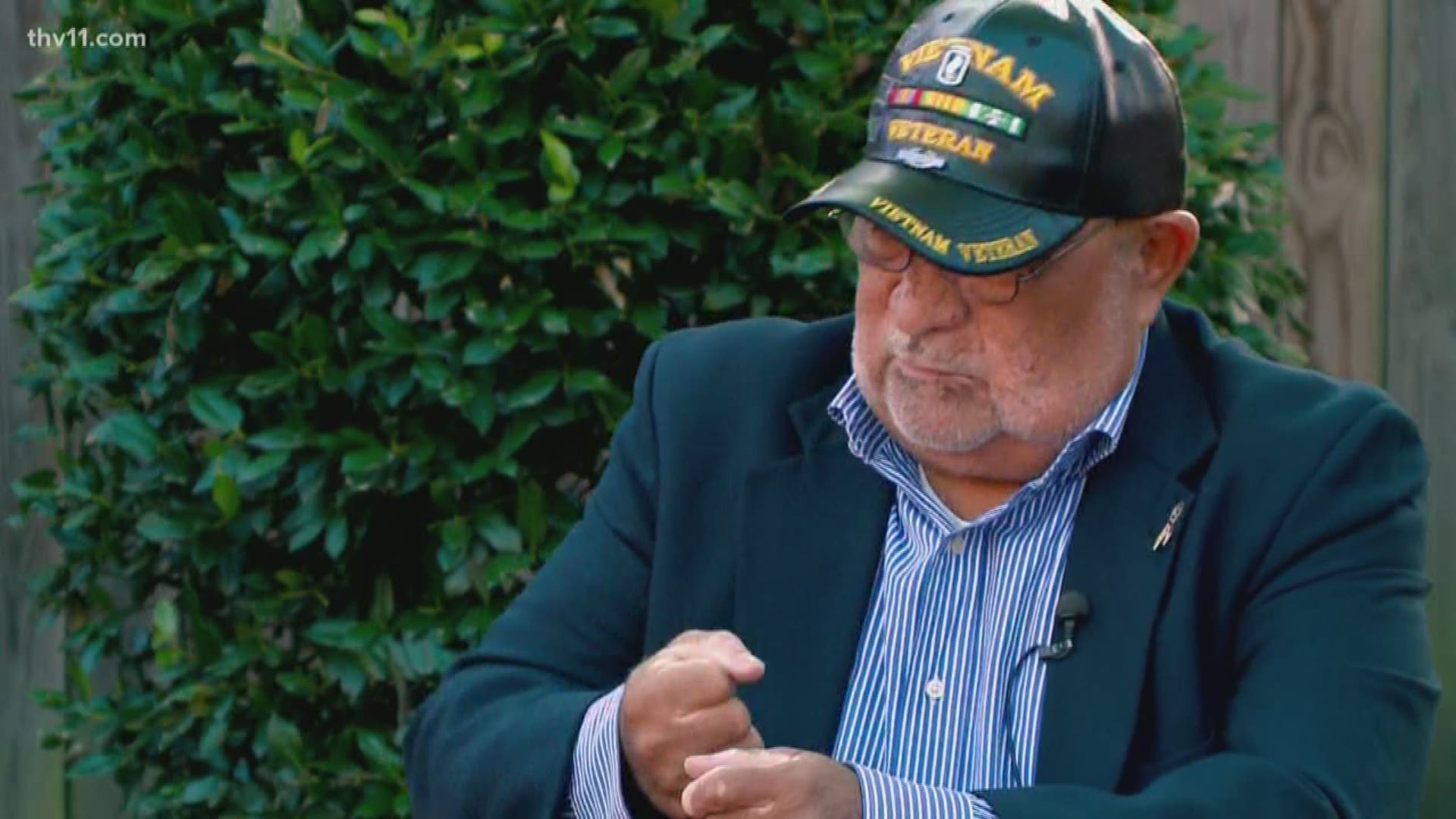LITTLE ROCK, Ark. — The sprawling Dept. of Veterans Affairs has given rise to numerous examples of problems as it tries to care for the millions of men and women hurt while serving the country.
Reform efforts have been well documented and the famously closed system is starting to open up, but an 11 News Investigation has found a problem tripping up veterans trying to take that outside path.
Six years ago, the size of the agency led to a scandal, with veterans literally dying while on waiting lists to get care. The fallout accelerated efforts to allow veterans to go to private doctors and the use of a type of form called Disability Benefits Questionnaire or DBQ.
Several veterans told us their histories of frustration with the agency and questioned how the DBQ is only contributing to it.
We asked a couple of veterans to come to talk with us, but they spread the word on social media and more than a dozen showed up. Some had war stories, but all shared sad stories of their time trying to get care through the V.A.
"I've been fighting that over 10-12 years," said Betty Koontz. "It took 10 years. I got frustrated after that. I kept it going. I did what I was supposed to do."
"How does a veteran know to go do all this stuff?" asked Kemit Tracy.
"A lot of them don't know that DBQs are there for us to print out," said Charles Cervantes.
"They haven't given me due process with my claim," said Myles Terry.
"Congress and the Senate needs to tell these people to do a better job," said Larry Flowers.
As you can hear in their statements, this frustration has been around a while. V.A. leaders know it's there.
In an interview with then-director Lisa Bruen in August, she explained that DBQs were created to give vets a way to go outside the system and streamline the process, but you'll forgive these vets if they don't believe her.
"Problem is that when you go outside the system on a DBQ, the psychiatrists don't have that much years to notice," said Cervantes, who is like thousands of men facing health problems 40 years removed from jumping out of planes over Vietnam. He came home in 1970 with a deformed face and a disturbing head. "I used to have a cute nose."
Cervantes' first brush with the V.A. came when he showed up at a center in California with suicidal thoughts. He said he went on the "Thorazine Shuffle," meaning he was given a shot of anti-psychotics and a straight jacket.
"All of us -- we tried to mask our problems with the booze and drugs," he said.
He found a way through it, but it would be a decade before he returned to the V.A. for other health problems.
"If I had gotten care a little bit earlier to helping, maybe I would have ended up being a whole lot better off," Cervantes said.
The silver lining to his first experience with the V.A. was that he was already in the system when he came back. For others, getting in is half the battle.
"If you don't know exactly what form you're filling out if you don't get the correct form, they'll kick out the claim," said Bobby Denney.
Jessica Jacobsen tried to clear up some of the confusion on behalf of Bruen after she left the agency to work in the private sector. The agency refused to make anyone available for an on-camera interview subsequent to her departure. The public affairs office based in Dallas pointed out that the DBQ is not the lone reason for granting or denying a claim.
But the veterans and legal experts insisted that i's need to be dotted and t's crossed. They said that if a private doctor fails to fill it outright, it often gets slotted for a what's called a "compensation and pension exam" or "C & P."
It means the vet goes right back into the system they may have been trying to avoid. And to some, it's a system rigged against them.
"If you are 50% or higher, you can be treated at the VA and they gotta pay for it," said Isiah Dyer, the most senior veteran who spoke with us, referring to the rating system the Veterans Benefits Administration uses to determine how disabled a person is. "Now if you're 40% or lower, then they charge you a co-pay."
Jacobsen responded after this story was published to say that treatment for service connected conditions never results in a co-pay. Depending on income, veterans who are 0-40 percent disabled are charged a co-pay for service that is unrelated to his/her service connected condition.
Vets like Dyer, with long histories of trying to convince the V.A. that their current ailments are related to their time in the military, say they're keeping DBQs at arm's length, but they have a request for the people in charge to make it all a little better.
"They really need to look at what happens when they make those decisions of denial," said Koontz.
"And just take care of the people that served you," said Denney, sitting next to Flowers with his leg in a brace. "You've got people like [Flowers] and a lot of others who definitely have their battle scars. They're fighting for their country. They're fighting for the United States."
(Eds. note: This story has been revised on 11/14/2019 after responses from the public affairs office subsequent to publication. Revisions include the official name of the agency, the nature of Ms. Bruen's separation and clarification on when co-pays are required.)

